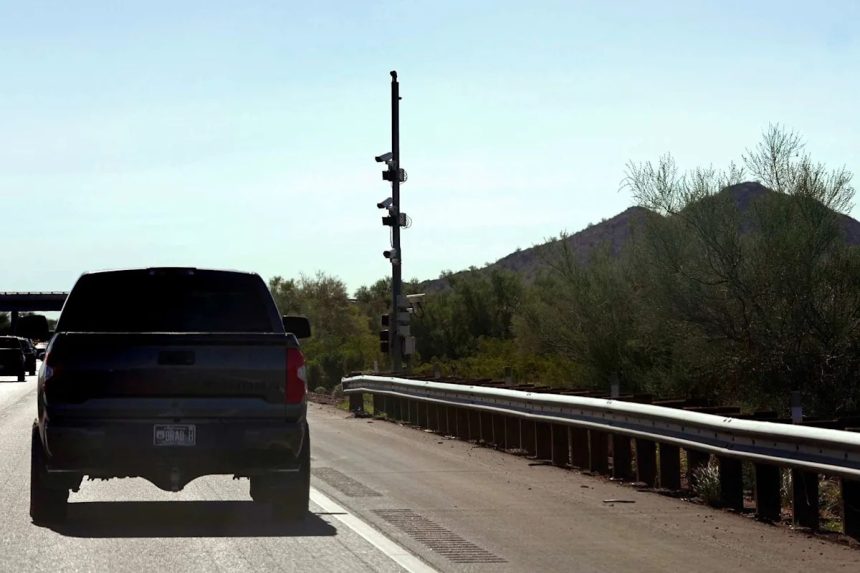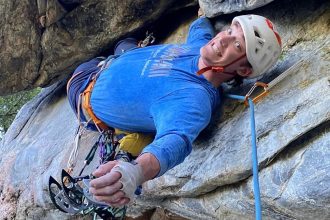NEED TO KNOW
-
U.S. Border Patrol agents are reportedly making use of a covert surveillance system to identify “suspicious” drivers
-
According to a report released on Thursday, Nov. 20, Border Patrol is using the system to identify “suspicious” drivers and pass information to local authorities
-
The system reportedly uses cameras hidden in construction cones and other objects
A bombshell report suggests that the U.S. Border Patrol is using covert surveillance systems to monitor American citizens while they are behind the wheel of a vehicle to identify “suspicious” patterns.
Described as a “predictive intelligence program” by the Associated Press, the system uses cameras and license plate scanners to track drivers, oftentimes reaching well beyond the 100-mile radius of the U.S. border that Border Patrol usually operates in.
Once a “suspicious” pattern has been identified, Border Patrol reportedly passes on information to local authorities, who can then make a traffic stop where drivers are “aggressively questioned and searched,” the report alleges.
The outlet added that the cameras are often hidden in construction cones or disguised in other ways along the roadside, creating a covert monitoring system for Border Patrol agents to monitor.
Ross D. Franklin/AP Photo
Stock image of a license plate reader used by Border Patrol
Cameras are reportedly present in states such as California, Texas and Arizona along the southern border as well as other states along the northern border with Canada. However, AP reported that they also extend into major metropolitan cities such as Chicago, Detroit and Los Angeles.
Per the outlet, the system is searching for travel patterns that can be “deemed suspicious or tied to drug or human trafficking.”
This includes anything from using back roads to “making short trips to the border region.” The report did not clarify what exactly it defined as “short trips.”
To expand their reach, AP reported that Border Patrol has used license plate readers provided by the Drug Enforcement Administration and private companies. Local authorities are also sometimes paid to monitor the system, reported the outlet.
The report comes after Donald Trump‘s signature Big, Beautiful Bill designated $2.7 billion for Customs and Border Protection to develop “new cutting-edge border surveillance,” according to a July 4 release from the Department of Homeland Security (DHS), of which U.S. Customs and Border Protection is a subset.
This formed part of a larger $165 billion DHS budget, which Secretary Kristi Noem described as “a win for law and order and the safety and security of the American people.”
“This $165 billion in funding will help the Department of Homeland Security and our brave law enforcement further deliver on President Trump’s mandate to arrest and deport criminal illegal aliens and MAKE AMERICA SAFE AGAIN!” she said in the July 4 statement.
AP reported that the use of artificial intelligence might make these monitoring systems even more powerful, despite concerns that the systems could potentially invade the privacy of American citizens.
In a statement shared with AP by Customs and Border Protection, the organization stated that they are “governed by a stringent, multi-layered policy framework, as well as federal law and constitutional protections, to ensure the technology is applied responsibly and for clearly defined security purposes.”
“For national security reasons, we do not detail the specific operational applications,” the agency added.

Ross D. Franklin/AP Photo
A Border Patrol checkpoint
Citing a 2017 policy document, AP reported that license plate readers were supposed to be used “for a set period of time while CBP is conducting an investigation of an area of interest or smuggling route.”
Afterwards, the Department of Homeland Security stated that the cameras were “removed.” However, AP cited court documents as well as interviews with multiple anonymous government employees and reported that they are a “major — and in some places permanent — fixture at the border region.”
It is not immediately clear how useful the system is for identifying criminals. While one former Border Patrol agent told AP that they “had an 85% success rate of discovering contraband,” another was “unaware of successful interdictions based solely on license plate patterns.”
Never miss a story — sign up for PEOPLE’s free daily newsletter to stay up-to-date on the best of what PEOPLE has to offer, from celebrity news to compelling human interest stories.
The report comes amid an uptick in complaints about Border Force activity. On Thursday, Nov. 19, North Carolina resident Willy Aceituno’s said that his truck’s window had been smashed by Border Patrol agents while he told them he had been U.S. citizen for six years.
The incident took place on the morning of Saturday, Nov. 15, in Charlotte, according to The New York Times and the Charlotte Observer.
Speaking with the Times, Aceituno said he was approached by agents in a parking lot as he headed to breakfast before starting work on a construction site.
On October 29, the DWRunning Club in Chicago also posted shocking footage of a 76-year-old U.S. citizen allegedly breaking his ribs while being pinned to the ground by Border Patrol agents.
“One of our athletes was on his way home from a team long run yesterday and as he turned onto his block, found that Border Control had the road blocked,” DWRunning Club wrote. “The agents threatened to break his window if he didn’t move his car. Before he could act, they pulled him out of his car, knelt on his back, and subdued him, though he never resisted. They broke six of his ribs and caused internal bleeding.”
“This really is happening in our country with frightening frequency. It’s terrifying and it has to stop. We must keep sharing these stories, calling out these injustices and standing up for those who can’t stand up for themselves,” they added.
PEOPLE has reached out to the DHS, U.S. Customs and Border Protection and the DEA for further information.
Read the original article on People









